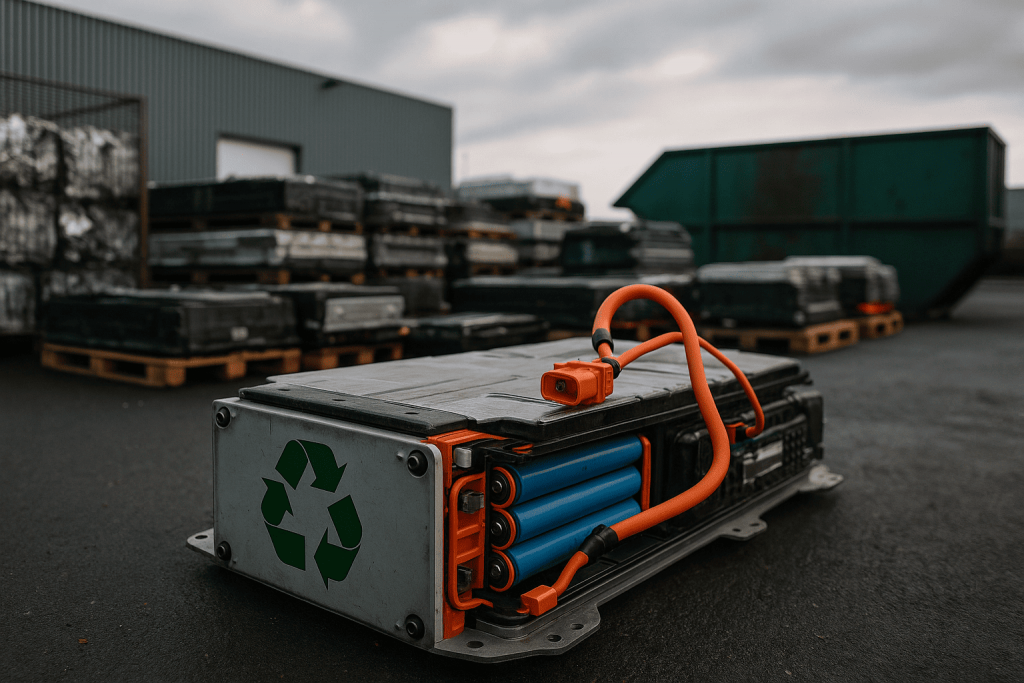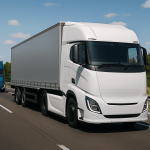As electric vehicles (EVs) rapidly gain popularity, a new challenge has emerged alongside their success: what happens to the batteries when their performance no longer meets the standards required for automotive use? Rather than sending these powerful energy storage units to landfills, a growing industry is emerging around the concept of battery reuse and recycling—a critical step toward a truly sustainable EV ecosystem.
Why EV Battery Reuse Matters
EV batteries typically lose about 20–30% of their original capacity after 8 to 10 years of use, which reduces their suitability for high-performance applications like propulsion. However, they often still retain enough capacity (60–80%) to be valuable in less demanding settings. Extending the life of these batteries through reuse significantly reduces waste, conserves resources, and lowers the environmental impact associated with mining raw materials like lithium, cobalt, and nickel.
Second-Life Applications: From Cars to Grid
One of the most promising areas for second-life EV batteries is stationary energy storage. These systems can be used to store solar and wind energy, balance supply and demand on electrical grids, or provide backup power to homes and businesses. Automotive giants such as Nissan, Renault, and BMW are already deploying second-life battery projects:
• Nissan’s “xStorage” system repurposes Leaf batteries for home energy storage, integrating with rooftop solar systems.
• Renault’s “Advanced Battery Storage” project is building one of Europe’s largest stationary storage networks using used EV batteries.
• In Amsterdam, used batteries from electric buses are powering a stadium’s lighting and emergency systems.
Battery Recycling: Closing the Loop
Eventually, even second-life batteries degrade beyond usefulness. At that point, recycling becomes essential. Modern battery recycling aims to recover as much material as possible for reuse in new battery production. There are several approaches:
• Pyrometallurgy: Involves smelting batteries to extract valuable metals. It’s energy-intensive but simple.
• Hydrometallurgy: Uses chemical solutions to dissolve and recover materials like lithium, cobalt, and nickel. It’s more efficient and environmentally friendly.
• Direct recycling: A newer approach that preserves the cathode’s structure, allowing direct reprocessing with minimal refining.
Companies like Redwood Materials (USA), Li-Cycle (Canada), and Umicore (Belgium) are developing scalable solutions to meet the coming surge in end-of-life batteries. Tesla’s Nevada Gigafactory is already recycling scrap and used battery material on-site.
Challenges to Overcome
While promising, battery reuse and recycling face several barriers:
• Variability in battery design makes standardized recycling complex.
• Battery disassembly is labor-intensive and potentially hazardous due to high voltages.
• Logistics and traceability of used batteries require a robust regulatory framework.
• Economic feasibility still depends on scale and material prices.
To address these issues, the EU has introduced new battery regulations that require higher recycling efficiency, mandatory take-back schemes, and minimum levels of recycled content in new batteries starting from 2030. In parallel, automakers are designing future batteries with easier disassembly and recycling in mind.
Environmental and Economic Impact
Reusing and recycling EV batteries dramatically reduce the need for virgin raw materials, lower carbon emissions from mining and processing, and create new job opportunities in circular economy sectors. A battery that lives first in a car, then as a home energy storage unit, and finally as a recycled resource illustrates a complete sustainable life cycle.
Conclusion
The second life of EV batteries is not just an environmental necessity—it’s an economic and strategic opportunity. As millions of EVs hit the road, their batteries will shape the next wave of clean energy solutions. Through intelligent reuse and advanced recycling, we can ensure that the electrification of transport leads not just to cleaner roads, but to a more sustainable and circular global economy. For governments, automakers, and innovators alike, the time to invest in this future is now.



haha used evs batteries r the really cool, why didnt think of that before?
so dope n eco!👍
secondlife evs battz r genius 🤯